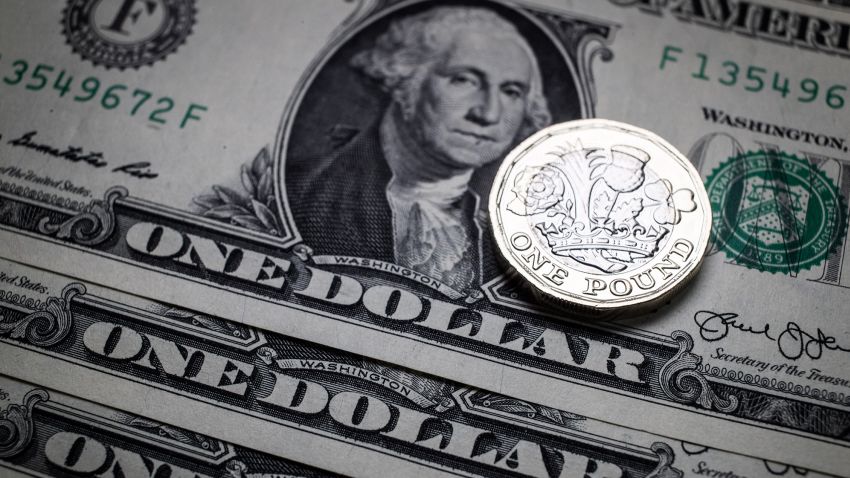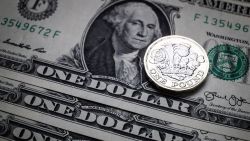Editor’s Note: David Wilcox is director of US Economic Research at Bloomberg Economics and a senior fellow at the Peterson Institute for International Economics. He served as director of the domestic economics division at the Federal Reserve Board from 2011 to 2018. The opinions expressed in this commentary are his own. View more opinion at CNN.
Rising prices are causing real and immediate financial hardship for millions of American households. While a growing number of economists claim the Federal Reserve has gone too far in its fight against inflation and is unnecessarily setting the US economy up for a hard landing, I would argue the Fed is doing what it must to fulfill its responsibility for controlling inflation, even if doing so means risking a recession.

The higher inflation rises, and the more it resists the Fed’s efforts to control it, the tougher the Fed will have to be. This is the textbook prescription for how a central bank should behave.
High inflation is a problem for several reasons. Many people today are experiencing a serious erosion of their standard of living as increases in the prices of items they purchase outstrip any increases in income they might receive. High inflation also complicates everyday decision-making about key issues, such as how much to save for retirement. And it increases anxiety, partly because high inflation also tends to be more variable and unpredictable.
Unfortunately, the only known remedy for persistent high inflation is a recession. Today’s hardship from rising prices is therefore likely to be followed by an increase in joblessness over the next year or two. The Fed understands the costs many Americans will probably have to endure for the sake of bringing inflation back down, but there is no other way out. The worse the inflation problem becomes, the greater the recessionary cost.
In 2021, when inflation was first emerging as a problem, it was concentrated in categories directly affected by the pandemic. Cars, for instance, saw rising prices due to the Covid-related shortage of microchips.
Now, prices are galloping higher for many household purchases, including everyday necessities. Over the 12 months ending in September, the consumer price index increased 8.2%. Food prices were up 11.2%, energy prices were up 19.8%, and shelter costs were up 6.6%. Together, these components constitute a little more than half of the average market basket. They’re items consumers can’t do without, so they have less discretion over whether to spend.
The question now is how much more the Fed will have to do to bring inflation back down to the target level of 2%. It has already raised interest rates by three-quarters of a percentage point three times this year, and left a widespread conviction that more rate hikes are yet to come. It has also begun shrinking its balance sheet by unwinding some of its bond purchases – another method for dialing back on the economic support it provided during the height of Covid.
Nobody knows whether these actions will turn out to be too little, too much or just right. That will depend on myriad factors outside the Fed’s control, such as what Russian President Vladimir Putin’s continuing invasion of Ukraine will do to the world’s energy and food supplies; how virulent the next strains of Covid prove to be and how far the economic decoupling of China from the rest of the world proceeds.
Despite the uncertainty, we know two things for sure. First, the Fed will need to continuously be in course-correction mode, responding to unforeseen developments by adjusting its policies to help get the economy back on track. Lately, the inflation news has run worse than expected, so the Fed has responded sensibly by being absolutely clear it will raise rates as much as necessary to quell inflation, even at the cost of sending the US economy into recession. If we get a run of news in the other direction, the Fed will be able to back off.
Second, this is a fight the Fed must win. We learned the bitter lesson in the 1970s of what happens when central banks don’t face up to their inflation-fighting responsibilities: We end up with an inflationary avalanche that becomes ever more difficult to stop.
Dealing with inflation problem now will be painful because it will probably cost many workers their jobs. But not addressing it now would make matters worse, as households and businesses become more convinced that high inflation is here to stay and it becomes a self-fulling prophecy. Faced with this choice – painful now, or more painful later – the Fed is taking the right path.
The process of bringing inflation down will be too slow for anyone’s satisfaction because it involves setting off a chain reaction that often takes one to two years to play out. The first step is that financial conditions have to tighten; that step is already well along. Loan rates have moved up sharply, stock prices have dropped, and the dollar has strengthened in foreign exchange markets.
Next, the tighter financial conditions have to restrain demand. Higher loan rates make it more expensive to borrow, discouraging purchases of new homes, cars and business capital. Lower stock prices mean households fortunate enough to own equities are suddenly less wealthy, so they reduce their spending. A stronger dollar makes the goods and services produced in the US relatively more expensive compared to items produced aboard, another necessary element of cooling demand. This second step is still a long way from completion. Housing construction has dropped off, but the labor market remains severely overheated, with too many unfilled jobs compared to the number of willing workers.
Finally, softer demand will eventually encourage firms to restrain their price increases, and workers to temper their wage demands. Once convincing evidence has emerged that this final step is well underway, the Fed will be able to begin cutting rates. As that happens, employment gains will resume, the unemployment rate will come back down, and inflation will once again be low and stable in the neighborhood of 2%. Economic life – at long last – will go back to something resembling “normal.”
The next year or two are certainly going to be tough. But the only thing worse than dealing with today’s inflation would be failing to do so. The economy won’t work to anyone’s satisfaction until inflation is under control. There’s no alternative but to grit our teeth and get on with it.


















